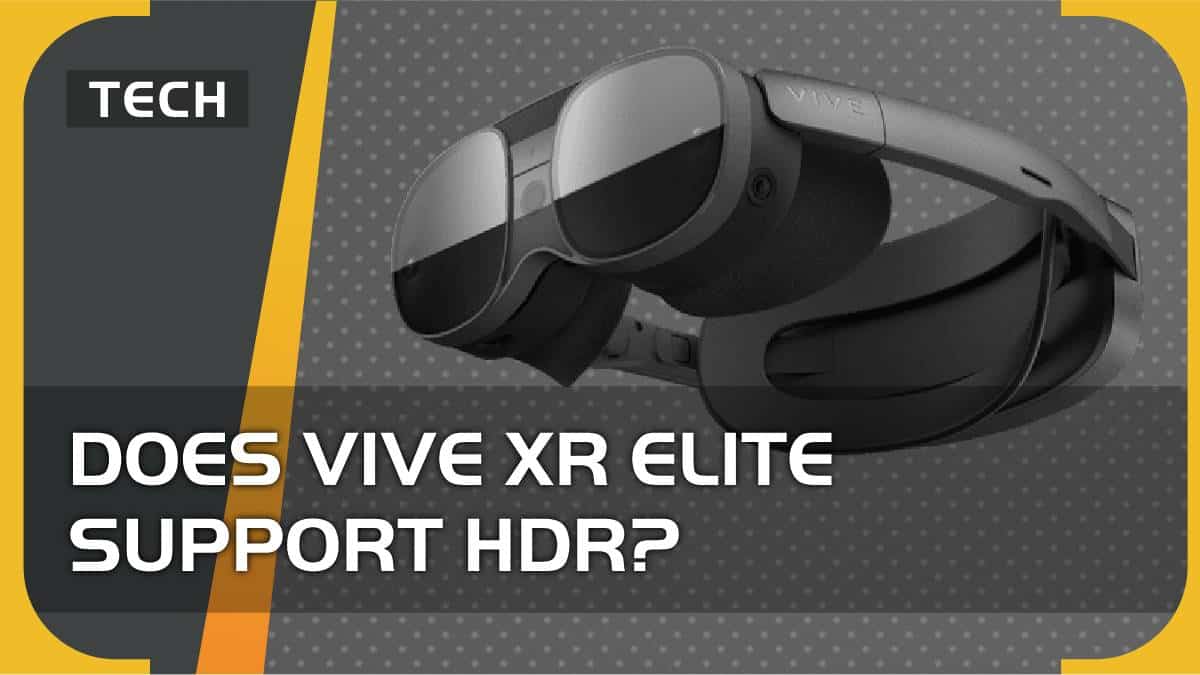You can trust VideoGamer. Our team of gaming experts spend hours testing and reviewing the latest games, to ensure you're reading the most comprehensive guide possible. Rest assured, all imagery and advice is unique and original. Check out how we test and review games here
With all the exciting steps forward in VR in 2023, you may be wondering if the Vive XR Elite supports HDR. Don’t worry though, we have the answers.
2023 is shaping up to be a big year for VR. The three leaders in the industry are releasing flagship devices, with the PSVR 2 and HTC Vive XR Elite already released, and the Oculus Quest 3 set to be later this year. As such, it’s no wonder that gamers are scouring the internet for every detail they can get about these behemoths of technology to help them decide which to invest in.
So, does Vive XR Elite support HDR?
Does Vive XR Elite support HDR?
In short, it doesn’t seem to.
We looked everywhere. We even combed through Vive’s Vive XR Elite’s features overview. No HDR.
If you were surprised by this one, don’t worry, so were we. Particularly as HDR has been around for a while now and can be incorporated into even the smallest of screens. In fact, most big name phones support HDR: the iPhone 11 series, the Samsung Galaxy S21 series, and the OnePlus 7 through 9 series all support HDR.
With that in mind, it’s frankly weird that the Vive XR Elite doesn’t. Even more so when one remembers that the Vive XR Elite is in direct competition with the PSVR 2 which does support HDR. (If this is dealbreaker for you, you might want to head over to our full break-down of the PSVR 2’s features, games and where to buy to see if that is more your style.)
So, why is this a big deal? First, let’s have a look at what HDR is.
What is HDR?
HDR is an acronym for High Dynamic Range. Basically, HDR refers to the contrast between colors within an image. The greater the contrast (the darker the dark, the lighter the light) the greater an image’s Dynamic Range.
Images enhanced with HDR can look vastly different to the original. Details appear in darker areas of the image, colors gain subtlety, brighter sections gain vigour; the image becomes far more realistic.
It all sounds great on paper, but as everyone knows, more doesn’t always mean better. Luckily most images designed for HDR are mixed by professionals. In fact, as well as phones, most flagship TV’s sold within the last four years will support HDR.
Read More: Best Budget 4K monitor – UHD picks for gaming, HDR, photo editing, and more
You can even find HDR in gaming. The PS4, PS4 Pro, PS5, and Xbox One S all support HDR10. HDR10 is an open HDR standard released in 2015. It’s one of the most common HDR standards you’ll see around. (If you’re still a bit unsure about HDR10 and how to get the best out of it, we’ve specifically worked out the best HDR settings for a few games to get you started, such as Hogwarts Legacy, and The Finals.)
Our Answer
Vive haven’t told us that the Vive XR Elite supports HDR (and, generally speaking, with these kinds of releases if they’ve got it they tell you.) It’s still odd, though.
The only reason we can think of as to why the Vive XR Elite doesn’t have HDR, is it’s design as a standalone device. HTC have added wireless capability to the Vive XR Elite so you can game with full manoeuvrability. This is super exciting, but it might have limited how much data they can flood the headset with. One thing you should know about HDR, it eats data.
However, this is all speculation. Vive haven’t even acknowledged the strange lack, let alone explained it. All we can do for now is wait to see if HDR will appear in the next generation.
Frequently Asked Questions
What resolution is Vive XR Elite?
The Vive XR Elite has a combined resolution of 3840 x 1920. At 1920 x 1920 per eye, this is 240 off 4k vertically and fully 4k resolution horizontally. The Vive XR Elite also has up to 110 degree field of view and Stepless IPD adjustment capabilities.
Is HDR the same as 4k?
No, HDR is not the same as 4k. 4k resolution refers to the number of pixels present within a screen. HDR refers to the capabilities of those pixels. HDR stands for High Dynamic Range and determines the range of dark and light within an image. An image with HDR will typically appear more realistic due to the additional detail within the shadows, colors, and brighter sections.






